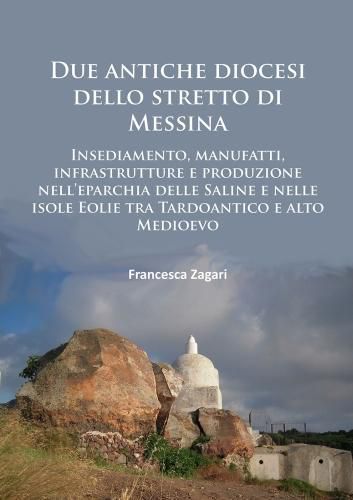Readings Newsletter
Become a Readings Member to make your shopping experience even easier.
Sign in or sign up for free!
You’re not far away from qualifying for FREE standard shipping within Australia
You’ve qualified for FREE standard shipping within Australia
The cart is loading…






This monograph is a comparative study of the Saline area and of the Aeolian Islands dioceses’ settlement in Late Antiquity and in the Early Middle ages. Both regions overlook the Straits of Messina, between Calabria and Sicily. The Saline area is located in Southern Tyrrhenian Calabria, and in the Middle Ages it is mentioned as an Eparchy , a Byzantine administrative division. The Aeolian archipelago is in the Tyrrhenian Sea off the North-Eastern coast of Sicily. It includes seven islands, the biggest of which is Lipari. The aim of the book is to reconstruct the settlement layout of these areas in an historical period that has been studied relatively little in Southern Italy. The settlement reconstruction was carried out by examining topographical features, patterns and dynamics, material culture, degree of continuity and discontinuity - especially compared to the Roman habitat - as well as agricultural and manufacturing systems and the road network.
$9.00 standard shipping within Australia
FREE standard shipping within Australia for orders over $100.00
Express & International shipping calculated at checkout
This monograph is a comparative study of the Saline area and of the Aeolian Islands dioceses’ settlement in Late Antiquity and in the Early Middle ages. Both regions overlook the Straits of Messina, between Calabria and Sicily. The Saline area is located in Southern Tyrrhenian Calabria, and in the Middle Ages it is mentioned as an Eparchy , a Byzantine administrative division. The Aeolian archipelago is in the Tyrrhenian Sea off the North-Eastern coast of Sicily. It includes seven islands, the biggest of which is Lipari. The aim of the book is to reconstruct the settlement layout of these areas in an historical period that has been studied relatively little in Southern Italy. The settlement reconstruction was carried out by examining topographical features, patterns and dynamics, material culture, degree of continuity and discontinuity - especially compared to the Roman habitat - as well as agricultural and manufacturing systems and the road network.